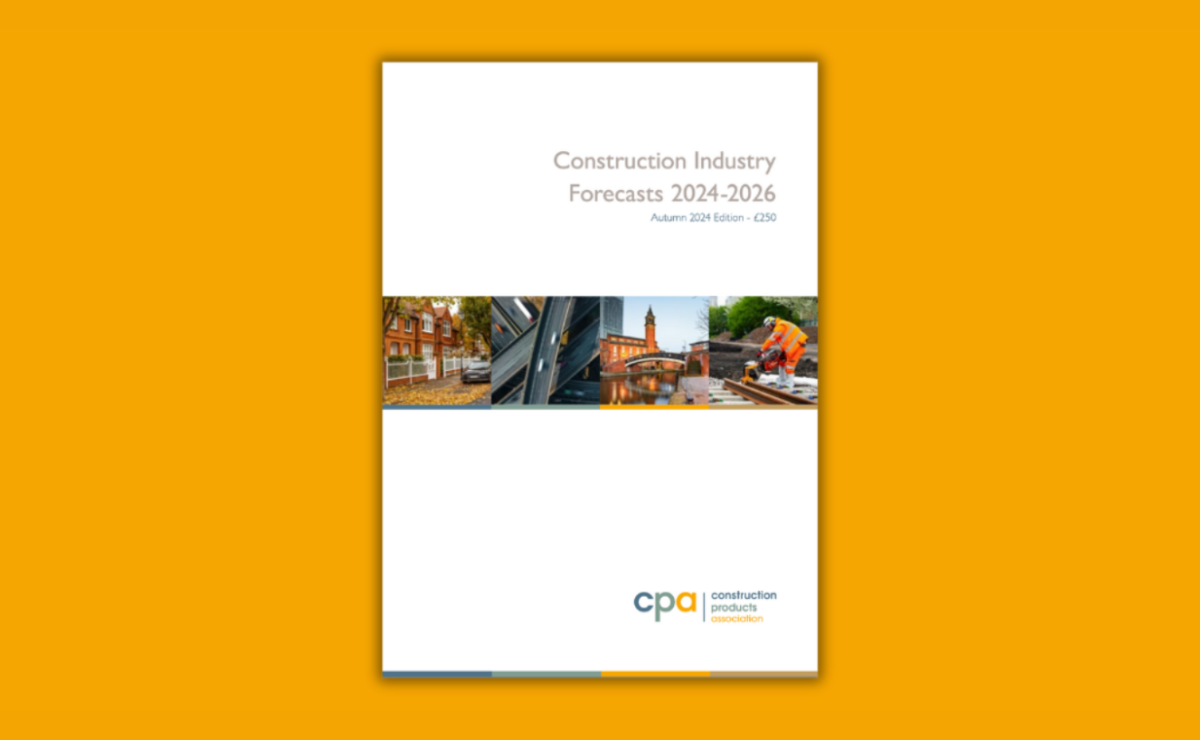The Construction Products Association’s Autumn forecasts see cautious optimism gradually returning to the industry for next year after the extremely challenging last 18 months for the two largest construction sectors, private housing new build and repair, maintenance and improvement (RM&I). Overall, total construction output is forecast to rise by 2.5% in 2025 and 3.8% in 2026 after falling by 2.9% this year.
In private housing – the largest construction sector – falls in interest rates and mortgage rates appear to be leading to a gradual recovery in demand for the wider housing market. This is expected to lead to better prospects for house builders. The new Government has shown clear intent to boost house building through easing planning by proposing major changes to the National Planning Policy Framework, which could ease one of the most-cited supply constraints, particularly for smaller house builders. Despite this, however, the key fundamental supply issues remain the same: a lack of planning resources at the local authority level, nutrient and water neutrality issues and Biodiversity Net Gain. There also appear to be considerable delays in starting high-rise housing and some commercial buildings due to uncertainty over the Building Safety Act and a lack of capacity at the Building Safety Regulator. Despite this, after a 9.0% fall in activity this year, private housing output is forecast to rise by 8.0% in 2025 and 7.0% in 2026. In addition, the risks tend to favour the upside, if the Chancellor uses her Autumn Budget to enable further demand in the private housing market and substantially increase funding for affordable housing near-term.
Private housing RM&I, the second-largest construction sector, is heavily dependent on consumer sentiment, real wage growth and home moves, which drive an increase in significant home improvements within 6-9 months of moving into a property. The expected recovery in the wider housing market, combined with improving consumer confidence and sustained real wage growth, is likely to boost RM&I activity from 2025 Q2. In addition, there has been a shift in home improvement spending over the last two years towards energy-efficiency retrofit and solar photovoltaic work, which continues to remain strong whilst building safety activity also provides a steady pipeline of activity. Overall, private housing RM&I output is forecast to rise 3.0% in 2025 and 4.0% in 2026 after a 4.0% fall in activity this year.
The outlook for construction sectors outside of housing remains similar to three months ago, although, given that the Government is the largest client in construction by far, accounting for almost one-quarter of all projects in the £180 billion industry, the Autumn Budget could have significant implications for critically needed investment in health, education and infrastructure.
Infrastructure, the third-largest construction sector, is forecast to rise by 1.6% in 2025 and 3.8% in 2026 after falling marginally, by 0.4%, this year. Activity remains strong on major projects such as Hinkley Point C and HS2 despite concerns about persistent cost overruns. Long-term frameworks in regulated sectors such as rail, energy and water continue to provide consistent activity levels. However, outside of this, concerns remain. We should see sharp increases in investment in the water sub-sector to deal with high-profile quality issues, and an upturn in spending near-term has been announced, but it is difficult to see delivery down on the ground before 2026, and this may be insufficient to offset decreasing activity on the Thames Tideway as it finishes. Energy infrastructure activity, however, continues to go from strength to strength as wind farm activity ramps up again.
Commenting on the Autumn Forecasts, CPA Economics Director Noble Francis says: ‘Construction has suffered a very challenging period over the past two years, with sharp downturns in the two largest sectors, private housing new build and repair, maintenance and improvement. However, cautious optimism appears to be creeping back into the industry. Broader UK economic growth, helped by lower interest rates and sustained real wage growth, combined with a stable Government, appears to be leading to improving consumer and business investment. However, the Government’s Autumn Budget will be key to ensuring that this remains the case.
‘There are significant upside risks to the forecasts if the new Government can improve the delivery of house building and infrastructure. However, downside risks continue to prevail. The UK construction industry has lost over 10,000 firms in the last two years. ISG, the 6th largest construction firm, is the latest example, as high costs, project delays, and skills shortages on fixed-price contracts acutely affect the whole supply chain. In addition, concerns remain over whether the Government will cut capital expenditure and pause, delay, review and cancel yet more investment in key infrastructure projects in the short-term to meet its fiscal rules. If so, falls in infrastructure activity could overshadow recovery in house building and RM&I.’
For more information view the Autumn Forecasts. TTA members can access the document free of charge, which has a value of £250, as part of their TTA membership benefits using the Members’ Area.






